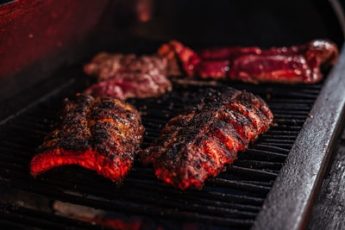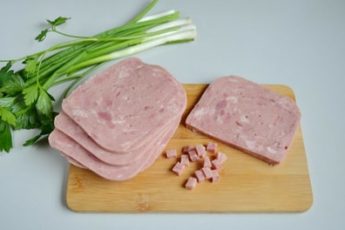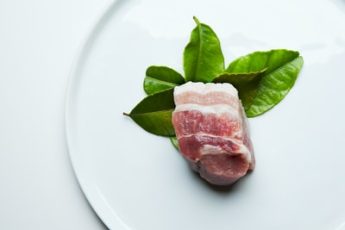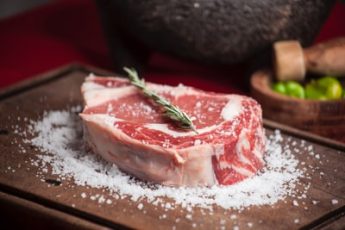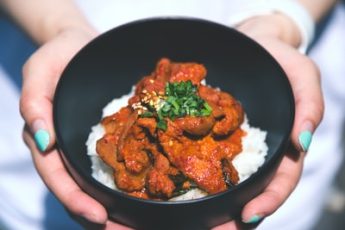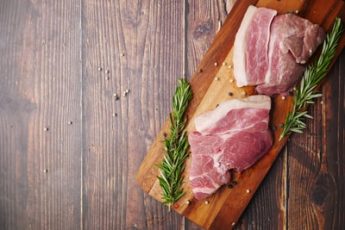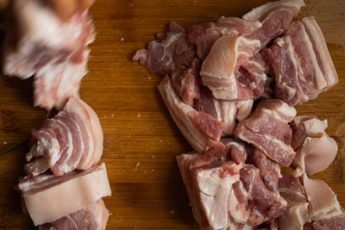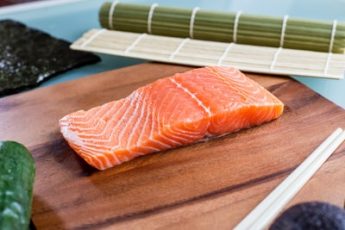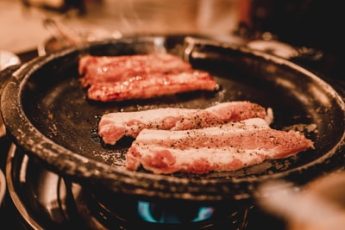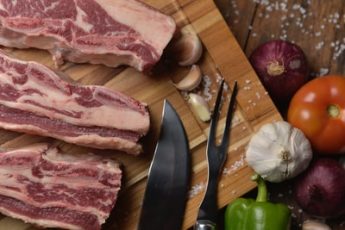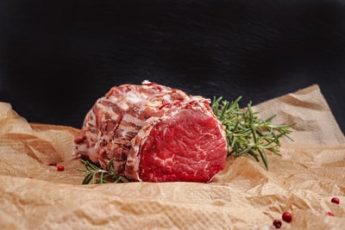Using Meat Thermometers For Cooking Pork
Meat thermometer is used to measure the cooking temperature of the meat. Cooking time of the meat is important because it determines the quality of the meat and the flavor of the food. However, the amount of time that is needed to cook the meat is not as important.
Introduction
This is a general guide for cooking pork with meat thermometers. Cooking times are approximate and will vary depending on the size of your roast or pork chops. The internal temperature should be 145 F for medium-rare or 155 F for medium, as measured by a meat thermometer inserted into the center of the roast or thickest part of the meat away from bone, fat, and gristle. Letting your pork rest for about 10 minutes after you remove it from the oven allows juices to redistribute so they don’t run out when you cut into it.
This is a general guide for cooking pork with meat thermometers.
| Image | Price | Buy | Prime | Title |
|---|---|---|---|---|
Top Top
Top | Buy Now | PrimeEligible | MEATER SE: Smart Bluetooth Meat Thermometer | Long Wireless Range | for Oven, Grill, Kitchen, BBQ, Smoker, Air Fryer | Step-by-Step Recipes in App | Dual Sensors | Black Charger [2024 Release] | |
 Top
Top | Buy Now | PrimeEligible | MEATER Pro: Smart Bluetooth Wireless Meat Thermometer Digital | 1000°F Heat Resistance | Long Range | Certified Accuracy | BBQ, Oven, Grill, Smoker, Air Fryer, Deep Fryer | 50+ Recipes in App | |
 Top
Top | Buy Now | PrimeEligible | MEATER Block: WiFi Smart Wireless Meat Thermometer | 4 Probes, Long Range | Perfect for BBQ, Oven, Grill, Kitchen, Smoker, Air Fryer | Apple Watch, Alexa Compatible | iOS & Android App | |
 Top
Top | Buy Now | PrimeEligible | Wireless Meat Thermometer Digital: Smart Multi Sensors Accuracy Bluetooth WiFi Food Thermometer with Ultra-Thin Probes for Cooking, BBQ,Oven, Grill, Smoker, Heat Resistance| Long Range| Fast Charging | |
 Top
Top | Buy Now | PrimeEligible | MEATER | The Original True Wireless Smart Meat Thermometer for the Oven Grill Kitchen BBQ Smoker Rotisserie with Bluetooth and WiFi Digital Connectivity | |
 Top
Top | Buy Now | PrimeEligible | ThermoPro TempSpike Plus 600FT Wireless Meat Thermometer with Upgraded Ultra-Thin Probe, Bluetooth Meat Thermometer Wireless for Outside Grill, Smoker Thermometer for BBQ Oven Rotisserie Sous Vide |
As an Amazon Associate we earn from qualifying purchases.
Cooking pork with meat thermometers is a great way to ensure that your pork is perfectly cooked, but there are a few things you should know about using them. First, it’s important to check the internal temperature of your meat in several different places. The thickest part of the roast will be hotter than any other part, so making sure that all areas reach 145°F will ensure that all parts of your meat have reached their target temperature. Also, don’t forget to allow time for resting before slicing into your roast after cooking!
Insert the thermometer into the thickest part of the meat, away from bone, fat, and gristle.
When cooking pork, insert the thermometer into the thickest part of the meat, away from bone, fat, and gristle. Place the thermometer in the center of the meat, not touching the bone. The thermometer should be inserted into the meat, not fat.
Roast, turning occasionally until a meat thermometer inserted into the center of the roast reaches 160°F to 170°F.
Roast, turning occasionally until a meat thermometer inserted into the center of the roast reaches 160°F to 170°F. Remove from oven when internal temperature reaches 160°F to 170°F for medium-rare or 165°F for medium-well done.
Preheat the oven to 325°F. Remove outer wrapping from roast; place roast in roasting pan with bone side down.
- Preheat the oven to 325°F. Remove outer wrapping from roast; place roast in roasting pan with bone side down.
- Roast for 20 minutes, then reduce heat to 300°F and continue cooking until internal temperature reaches 145°F for medium-rare or 160°F for well done (about 2 hours).
- Remove from oven, cover loosely with foil to rest for 10 minutes before carving into thin slices across the grain of the meat
- Let stand in pan for 10 to 15 minutes; remove any visible fat from roast.
Transfer roast to serving platter; cover and let stand 15 minutes. Add 1/4 cup water to the roasting pan; stir over medium-low heat until well blended, scraping up any brown bits from the bottom of the pan. Strain drippings through a fine-mesh strainer into a measuring cup; discard solids from the strainer. Spoon off visible fat from top of drippings; reserve drippings for sauce.
- Cover roast with foil and let stand for 10 to 15 minutes before carving.
- Remove visible fat from the top of the roast.
- Transfer roast to serving platter; cover and let stand 15 minutes before carving.
- Add 1/4 cup water to the roasting pan; stir over medium-low heat until well blended, scraping up any brown bits from the bottom of the pan. Strain drippings through a fine-mesh strainer into a measuring cup; discard solids from the strainer. Spoon off visible fat from top of drippings; reserve drippings for sauce (see recipe).
Remove all packaging materials and season meat as desired before grilling, broiling, or roasting.
- Remove all packaging materials and season meat as desired before grilling, broiling, or roasting.
- Seasoning can be done with salt and pepper
- Seasoning can be done with herbs and spices
- Seasoning can be done with a dry rub
- Roast until internal temperature (as measured with a meat thermometer) reaches 145°F, about 20 minutes per pound for a 7-9 pound roast or 130°F for lunch or dinner leftovers or 165°F when reheating fully cooked leftovers like pulled pork or pork ribs.
- Roast until internal temperature (as measured with a meat thermometer) reaches 145°F, about 20 minutes per pound for a 7-9 pound roast or 130°F for lunch or dinner leftovers or 165°F when reheating fully cooked leftovers like pulled pork or pork ribs.
- Cooking time depends on the size of the roast, the type of roast, and the oven temperature. For example: if you’re cooking a small pork tenderloin at 350°F in your toaster oven and want it to reach 140°F by the end of cooking, your total cook time will be around 20 minutes; however, if you were roasting a large slab of spareribs at 225˚ F in a slow cooker for 8 hours and wanted them to reach 190˚ F before serving, then those ribs would require much longer cooking time (around 12 hours).
Conclusion
And that’s it! As you can see, pork is a versatile and delicious protein that can be prepared in many different ways. There’s something for everyone, whether it’s roasted on the bone or sliced thin like bacon. Whether you’re cooking up a family meal or entertaining friends at home, we hope our guide will help make your next meal extra special with some easy-to-follow directions and helpful tips from us here at Thermoworks.
FAQ
The amount of time to cook a piece of meat depends on the amount of fat it contains. When the fat content of the meat is high, the cooking time is also high.
At the same time, the meat should be the same temperature as the ambient temperature in the place where the meat is going to be cooked. If the meat is raw, there is a possibility that the temperature in the room where the meat is going to be cooked will be too high. However, when the meat is steamed or deep-fried, there is less risk of having the temperature too high.
You should also check the temperature every 15 minutes so that the temperature stays constant. This prevents the meat from overcooking. When the temperature starts to rise, take the meat out of the oven and let it rest for at least 15 minutes before serving.

Meat thermometers have their own designs. There are two kinds. One kind has an alarm that sounds when the temperature reaches a certain level. Then, there is another kind that emits a sizzling sound when the meat reaches a certain temperature.
The other design of thermometer is the probe that is inserted into the meat. This kind is not suitable for steaks and chops because they tend to stick to the probe.
You should not remove the meat from the oven until the meat is fully cooked. Only after the meat is completely cooked should you turn it over and let it finish. Do not leave it unattended or it might break.
To make sure that the meat has reached the right cooking temperature, be aware of the color of the meat. The color of the meat tells you the level of its cook.
If the meat is white meat, it can cook very quickly. However, if the meat is pink or a dark color, the meat has not reached the right temperature yet. You should not continue to cook the meat as long as it is in this state.
For steaks and chops, it is better to use a thermometer because they do not have a lot of connective tissue. They require a faster temperature to reach the correct cooking temperature. In these cases, you can try cooking the meat in another oven or using a steamer.
Pork chops and pork steaks cook slowly. Use a thermometer to check the temperature and then set the timer to determine the correct cooking time.
Buy a meat thermometer for every kitchen that cooks pork. This can be a great asset for determining the correct cooking temperature.
